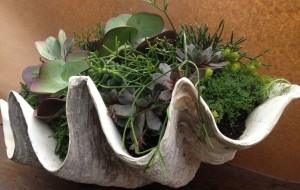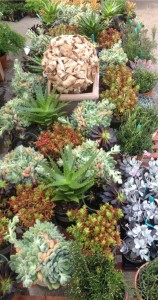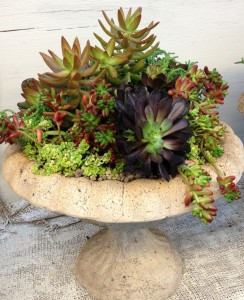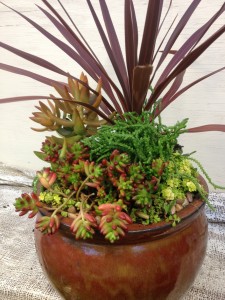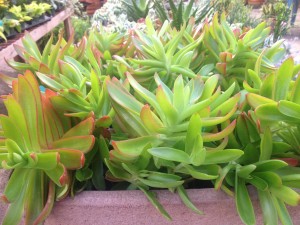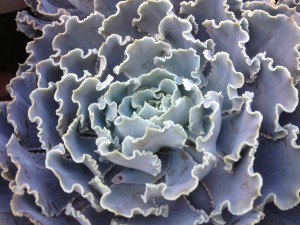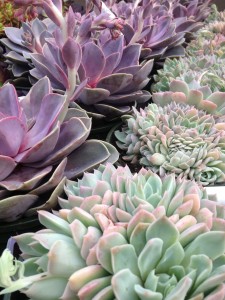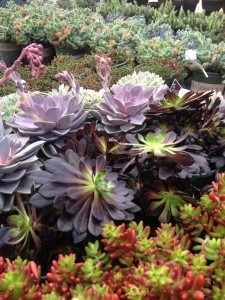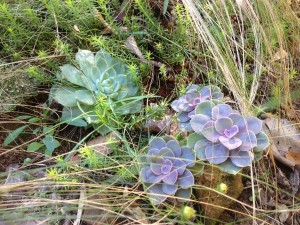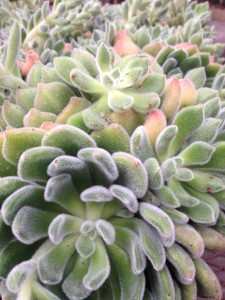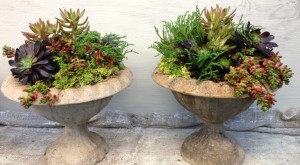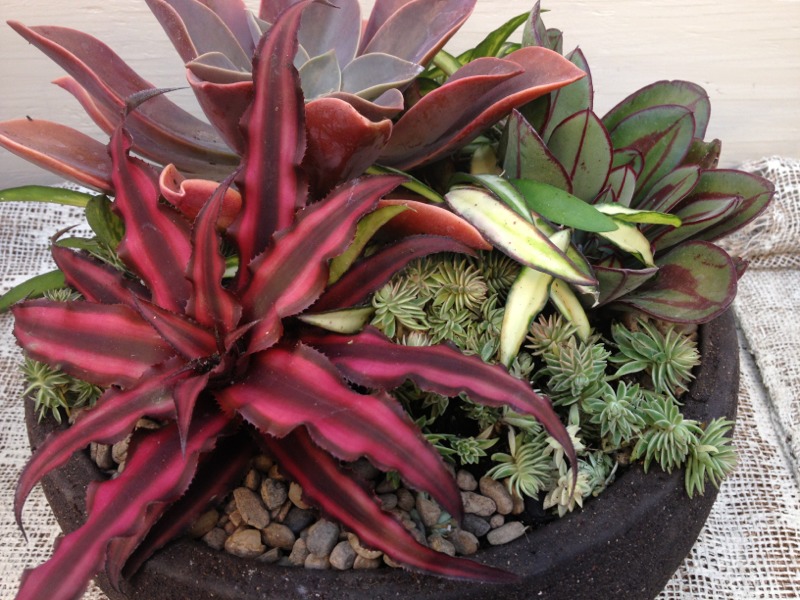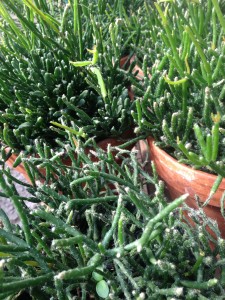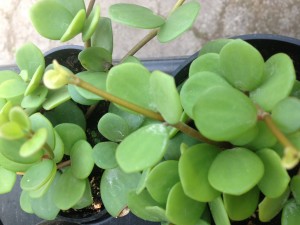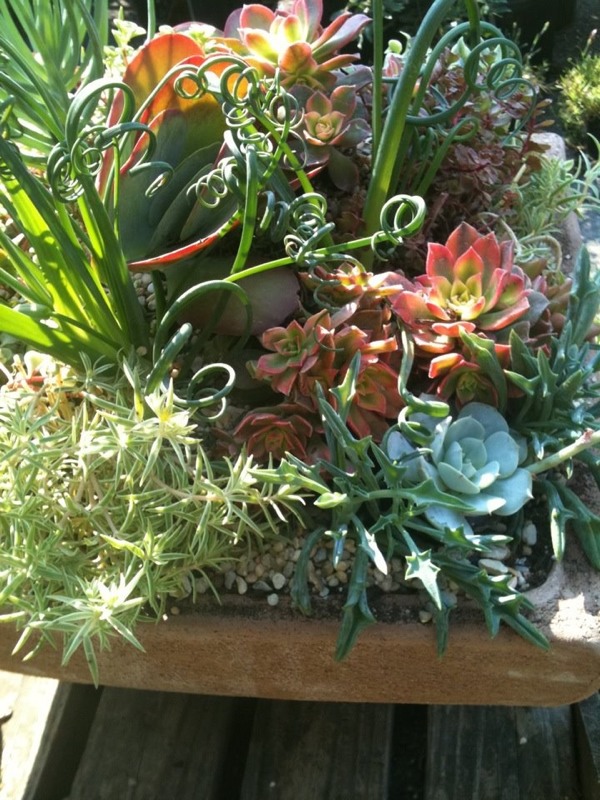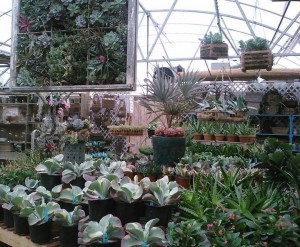
succulents in the greenhouse…
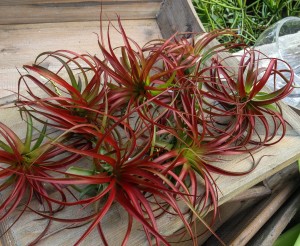
air plants…
With the spring planting season approaching, the nursery will be a plant lovers dream, filled with the best of everything we can find. These include fragrant, ornamental, and edible herbs, including the popular oregano ‘Kent’s Beauty’, sun and shade loving perennials for your garden, bright, flowering annuals for pots and planting beds, and shrubs expressly selected for their ornamental qualities and durability in southern gardens.
Another grouping of plants we have all year around are succulents, and they are so beautiful arranged in containers for the summer or as a combination planting in the home all year around. Some shown here also incorporate tillandsias, or air plants because their care and culture is so similar.

living wreath…
The living wreath shown here that Molly planted was a huge hit on our Facebook page, and for good reason. Just look at all the interesting textures and colors used, including echeverias, cryptanthus, air plants and even a tiny phalaenopsis orchid! This post on creating a living wreath give you some tips on how to make your own masterpiece. To see yet another that Jamie made, take a look HERE.
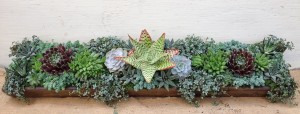 Because succulents, air plants and even bromeliads (another great companion) come in so many different shapes, colors and sizes, it’s fun to come up with endless combinations. Here are more that we’ve created in the past few months.
Because succulents, air plants and even bromeliads (another great companion) come in so many different shapes, colors and sizes, it’s fun to come up with endless combinations. Here are more that we’ve created in the past few months.
In this long, narrow planter Lauren used a number of different plants including succulent echevarias, sedums, haworthias, and a pretty pink aloe. Meandering through this combination are pilea ‘Aquamarine.’
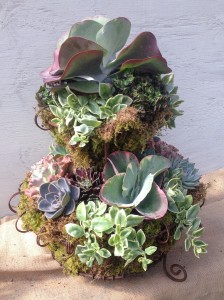
this will get large!
This two tier planting is going to get quite large! Flapjack kalanchoes share the space with a trailing succulent-like plant called dorotheanthus which will have charming little red flowers as the weather gets hotter. It’s also quite cold tolerant, though not completely hardy for us here. This container would be best moved in for the winter.
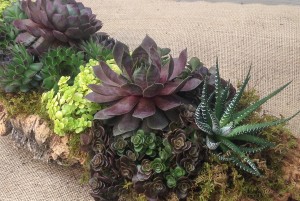
We’ve used cork bark planters to great effect in the past, and here Molly planted one with some really beautiful hen and chicks, sempervivum sp., and a couple of hardy sedums. This planting could be kept outdoors through the winter with the exception of the tiny aloes on each end, which can be repotted and moved inside during the colder months. The entire planting could also be moved into a sunny room for the winter.
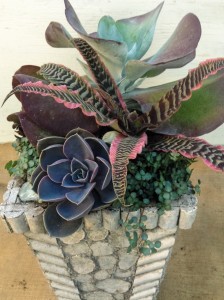
one of two…
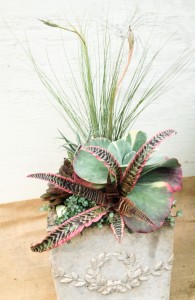
air plants add height until the flapjack kalanchoe gets larger…
The two pretty white pots shown here work together (There’s actually a third as well.) I used a tall tillandsia to add some height to this planting until the flapjack kalanchoe attained some size. The cryptanthus adds some color at the front and the pilea will contribute delicate trailing leaves to this composition. In the second pot I added an echevaria to the planting, keeping the pinky color scheme going.
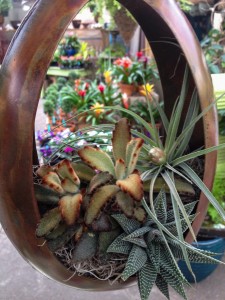
Be careful not to overwater if a container doesn’t drain…
Succulents can be planted in anything! This copper planter does not have drainage though, so the plantings need very careful attention to be sure they’re not overwatered – always be mindful of what kind of containers you’re using. Those that drain are always best. I have to confess I just really liked how this looked anyway! And, it’s been growing quite happily in the greenhouse since February.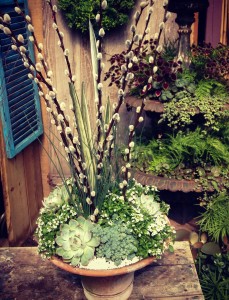
Succulents can be used as accents. too. Here a container is home to a tall sanseveria and pussy willow stems with sweet allysum tucked between for it’s dainty white blooms.
Finally, if you’re designing a container with succulents (Or anything!) remember the container you’re placing them in is part of the design as well. This little log shaped planter is brown in color but tinged with a touch of pink. I liked how the cryptanthus on the left picked up on that but contrasted with the other plants chosen to offset it in color and weight.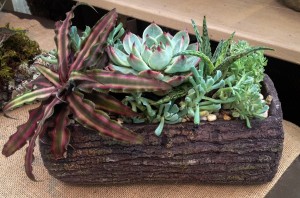
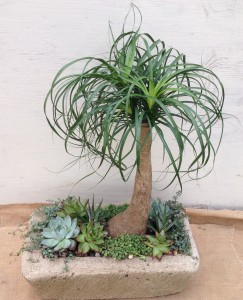 So, with warmer weather right around the corner, grab a pot, stop in , and find some succulents and air plants of your own to plant up – you can’t go wrong – promise!
So, with warmer weather right around the corner, grab a pot, stop in , and find some succulents and air plants of your own to plant up – you can’t go wrong – promise!

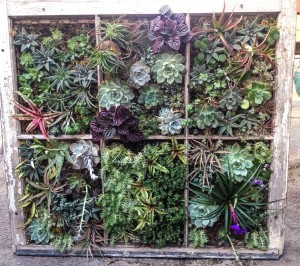
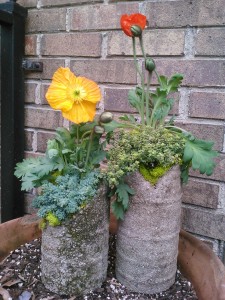
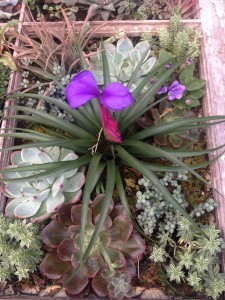
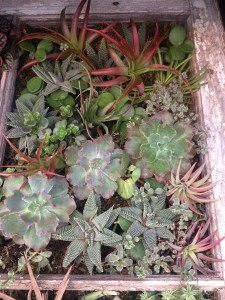
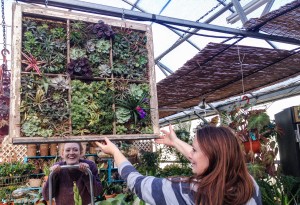

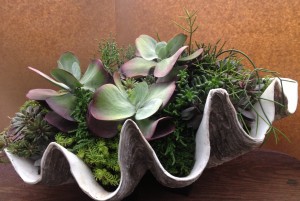 WOW! A customer brought this in the other day and I was the lucky one that got to plant it up! This clam shell is the real deal…a beautiful, large piece of natural art that had found its way to us.
WOW! A customer brought this in the other day and I was the lucky one that got to plant it up! This clam shell is the real deal…a beautiful, large piece of natural art that had found its way to us.